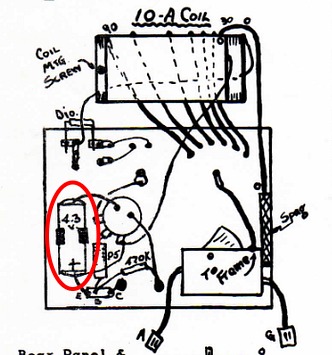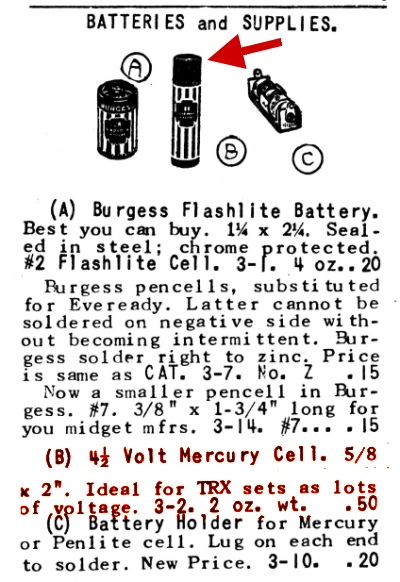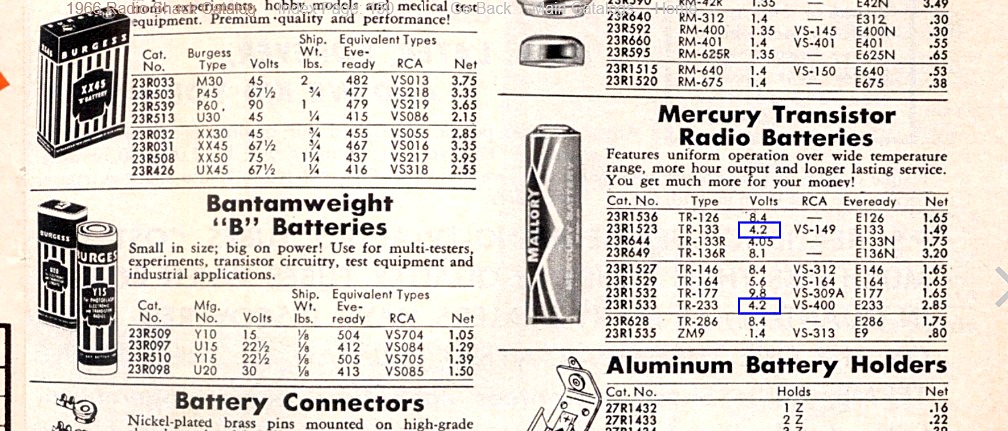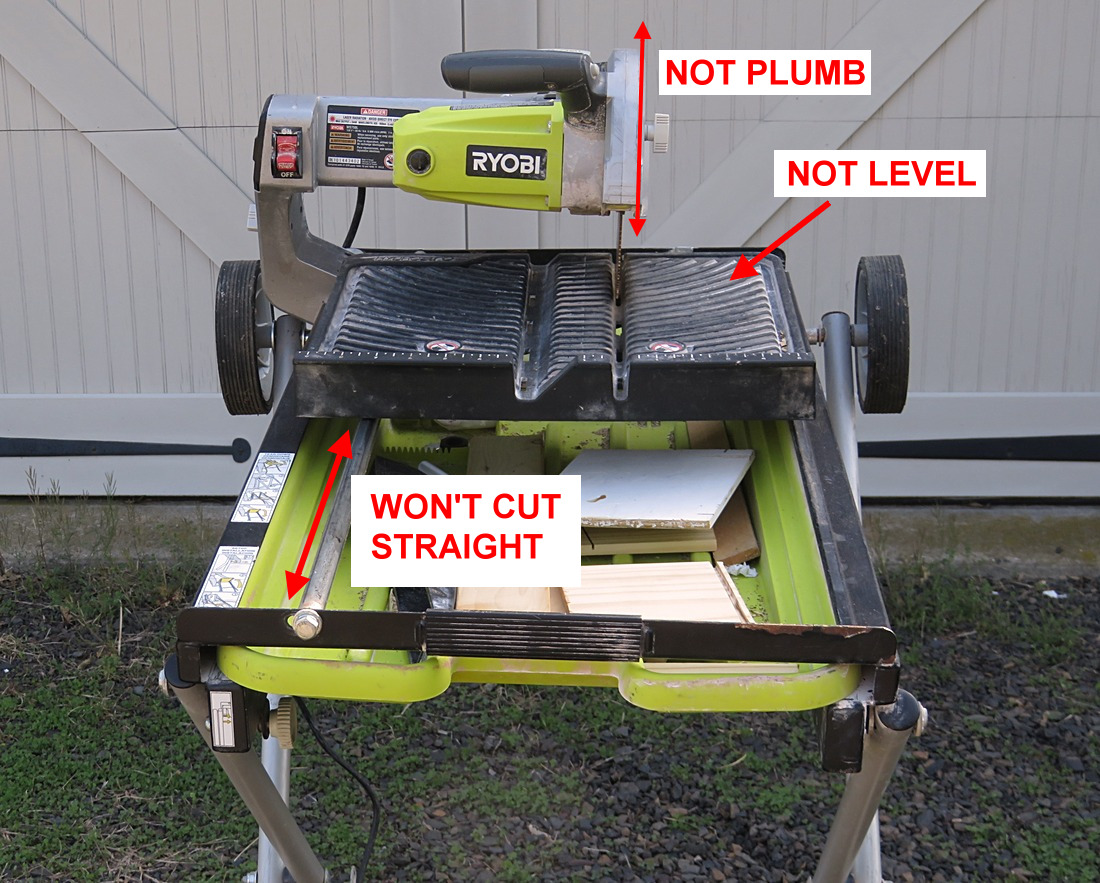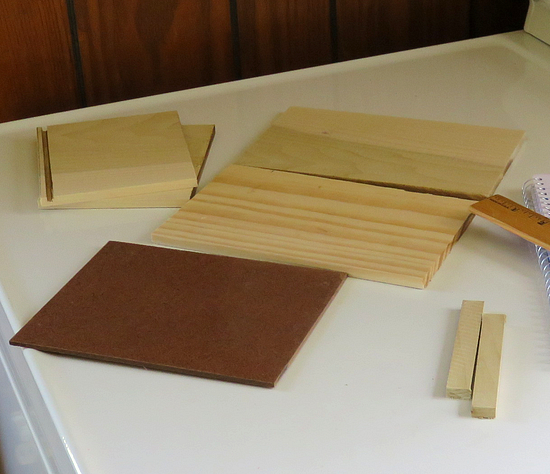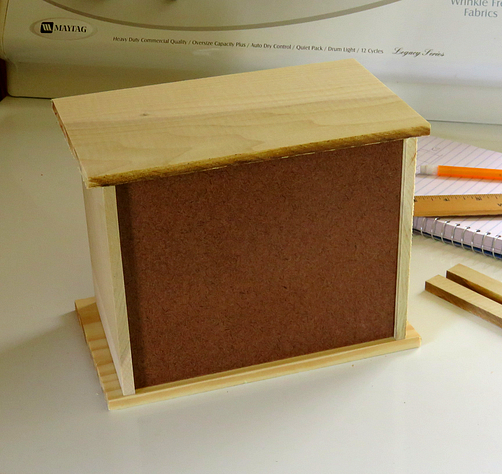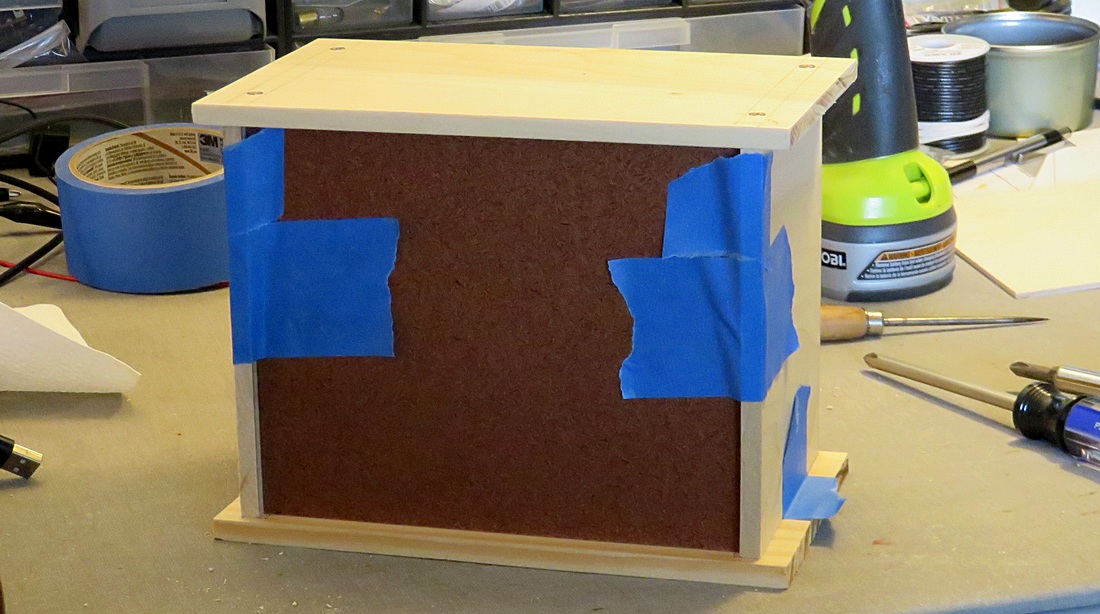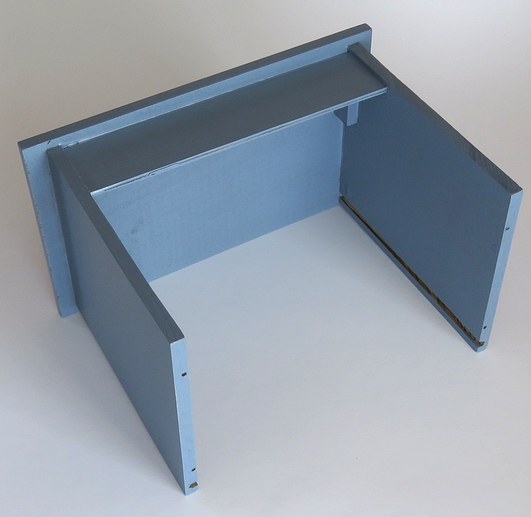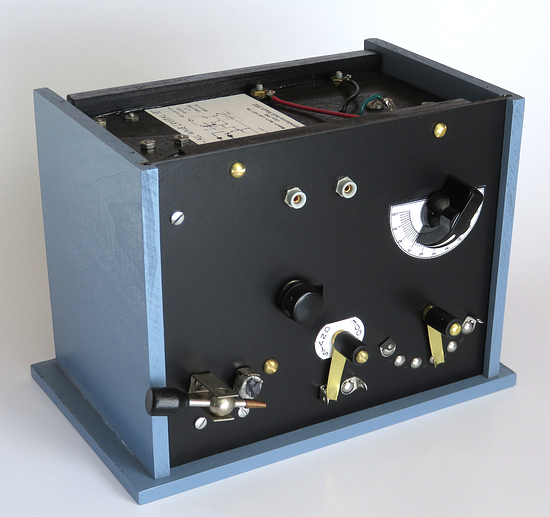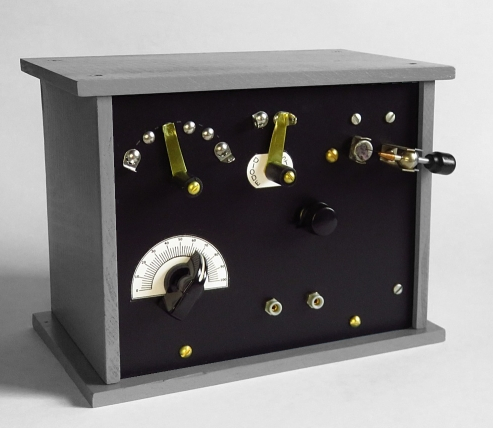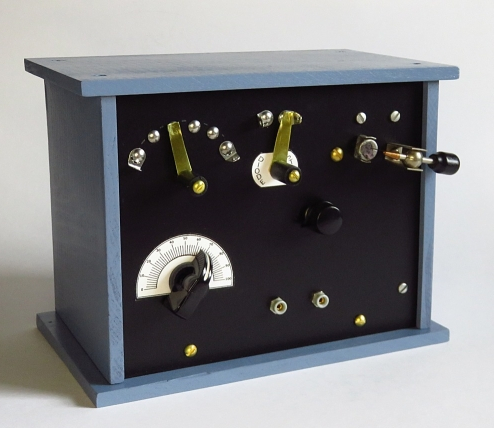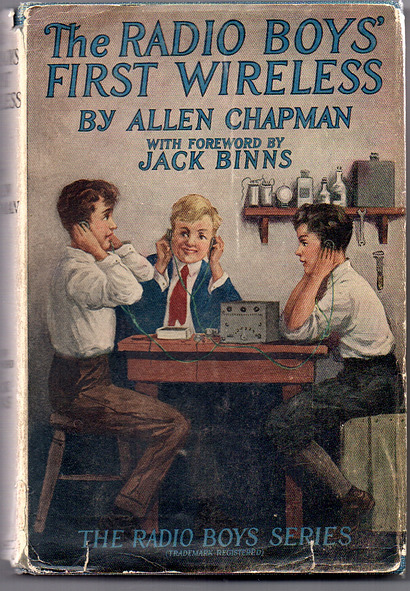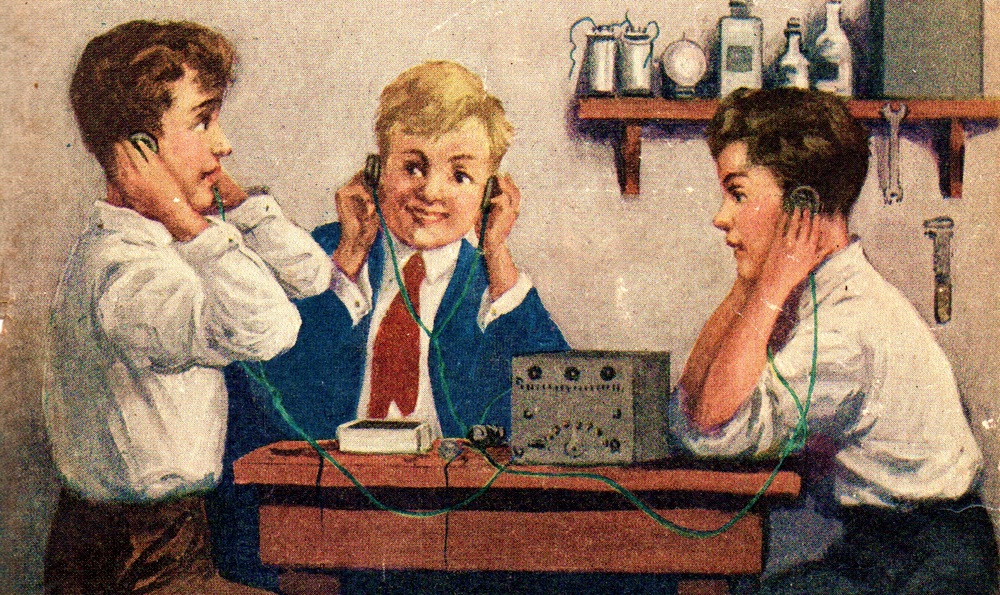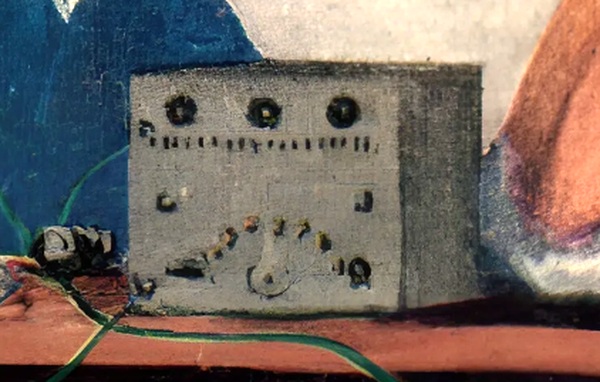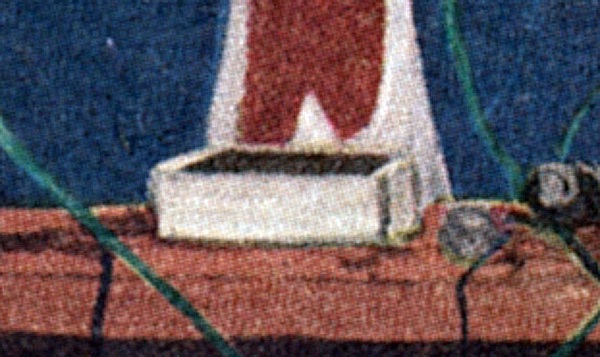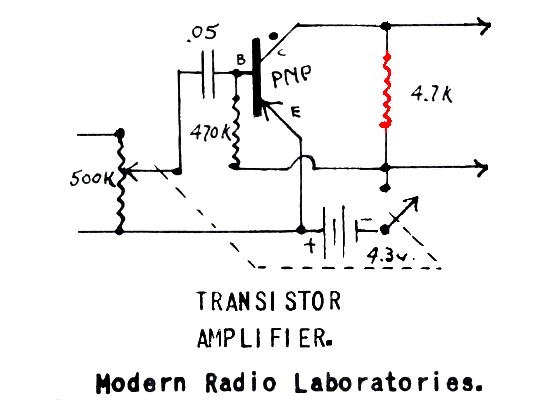|
|
|
|
|
THE MYSTERY BATTERY |
|
|
|
|
|
| The MRL catalog states that a 4.3 volt
Mercury battery was furnished with the kit. The parts
list also shows a 4.3 volt battery, as do the
drawings above, so this is not a misprint. This
battery was about the size of an AA battery and fit
into the battery holder sold by MRL for AA
batteries. |
|
|
|
|
|
|
|
|
|
|
|
|
| This entry from the 1963 MRL
catalog shows Elmer sold 4.5 volt batteries, not 4.3
volt. In the 1972 catalog this battery isn't listed,
but the catalog entries for both the MRL #18 and the
MRL #10 state they are supplied with a 4.3 volt
Mercury battery. Is it possible that the 4.3 volt
batteries were just old 4.5 volt batteries? |
|
|
|
|
| An Internet search for a 4.3 volt
battery, including old Allied Radio Shack and Lafayette catalogs,
and data sheets from Eveready, Burgess, and RCA does not
reveal a Mercury battery (or ANY battery for that
matter) that was rated at 4.3 volts and resembles an
AA battery in size. |
|
|
|
|
|
|
|
This is a page from a 1966 Radio
Shack catalog. The shape of the Mercury batteries
look right, but they are off by 1/10 of a volt.
There are ten types of Mercury batteries listed
here, but in 1960 Radio Shack sold THIRTY-SIX types,
and not one is rated at 4.3 volts. (Someone has set
up a great site to view RS catalogs. Select the 1960
catalog and go to page 178
here.)
An MRL fan named Jeff Schmidt wrote in on the
subject. He says a 4.2 volt can't be tweaked to
supply 4.3 volts because the voltage arises from the
choice of chemicals, not how much you use.
To deepen the enigma,
Elmer didn't sell them through the MRL catalog, they
only came with the kit. Who made them,
what did they look like, and
what did you do when your battery went dead?
There are many modern mysteries, such as "Where is
Emilia Earhart?," "Who was D. B. Cooper?," Did Paul
McCartney die in 1966?," and the ultimate mystery of
the Universe, "Why is there something instead of
nothing?" Now we can add, "Where did Elmer get
4.3 volt batteries?" |
|
|
| |
|
|
| This old relic has a 9 volt
battery snap, so I guess Elmer gave up on the 4.3 volt batteries. |
| |
|
|
|
A CABINET |
|
|
|
|
|
|
This tile cutting saw was found in the trash
two years ago. I walked it over a mile back to the house (it
has wheels). My idea was that this would make a great small
table saw, so I bought a blade and the bolt to hold the
blade on. Unfortunately I found the whole thing is out of
whack. I think it was either knocked over, or when they
threw it in the trash, they THREW it in the trash. After an
hour of messing with it I was able to cut some Poplar panels
for the cabinet, so the saw wasn't a total waste of effort. |
|
|
|
|
|
|
It's only a few pieces of wood, but slots are needed
to hold the front panel. The slots are what the tile cutting saw was
needed for. |
|
|
|
|
|
Using screws, glue and tape to assemble it
plumb and square using only my eyeballs guaranteed it would
have neither of those qualities. |
|
|
|
|
|
Actually, it came out pretty good. One side
is off a bit in the back, shown on the right photo while it
is upside-down. Nobody will ever notice. |
|
|
|
|
|
I bought gray and slate blue paint. I painted
it blue, then had second thoughts, so I removed the blue in
a photo editor and put it up for a vote. Blue won. I only
had two voters, other than myself, but one of them was my
friend Joe, who didn't like the cabinet at all when he first
saw it, and thought it should have been stained. I figured he'd be more objective. |
|
|
|
|
|
|
|
I think I liked gray because The Radio Boys
first crystal set was gray in 1922. |
|
|
|
|
Shown here are Herb Fennington, Joe
Atwood, and Bob Layton at the moment the very first signals
came into their radio, an overture played by a "famous
orchestra." Missing is Jimmy Plummer, who forgot his
headphones and ran home to get them. Why did the author
leave Jimmy out of this momentous scene? I wonder if it was
because it was easier to have three people on the cover of
the book, so you can see the radio better. It's also
possible that Jimmy, also known as "Doughnuts," was fat and
purposely wouldn't be included in the scene.
Why don't the headphones have headbands? |
|
|
|
|
|
|
| The Radio Boys first crystal radio. It
looks impressive, though we can't identify the round things
(knobs?) and the vertical lines across the top, even after
enhancing the image. I guess the
artist couldn't make it too precise, or your eye would go to
the radio and not the Radio Boys. |
|
|
|
|
|
What kept me awake at night was wondering, "WHAT WAS
IN THAT BOX?"
Eventually, the realization struck me that it was probably the
headphones. |
|
|
|
|
|
|
|
|
Here's a short video of the radio. |
|
|
|
|
|
| Note: Many small tube and transistor sets
use the headphones as part of the circuit. When connecting
to an amplifier (or using a piezo-electric or crystal ear
plug) a 4.7K resistor must be used in place of the
headphones to complete the circuit. |
|
|
|
|
|
|
| This concludes today's broadcast. |
|
| |
|
|
| |


